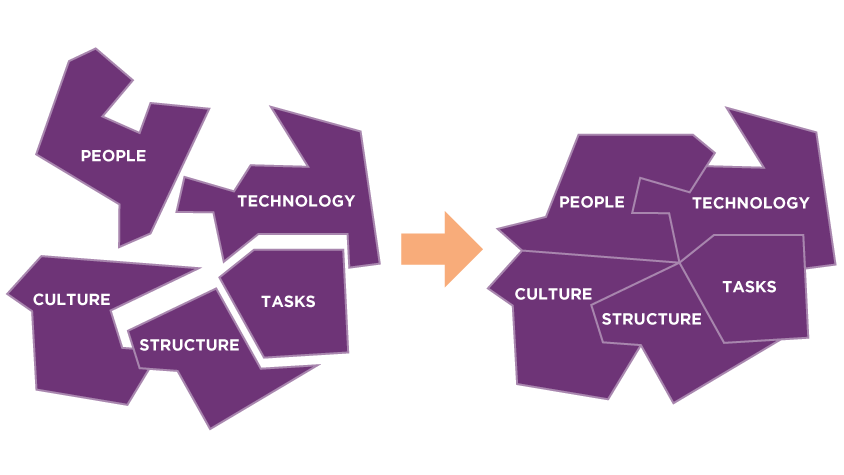Hayfa Mohdzaini, Senior Research Adviser, Data, Technology and AI, CIPD
Technology’s function in boosting people’s capability (augmentation) and replacing jobs or tasks has often been spoken and written about. But did you know there are other ways technology can impact people’s jobs? Besides augmentation and substitution (replacement), there are also intensification, transference, telepresence and creation (see figure below). Interestingly, according to the Institute for the Future of Work (IFOW), we can experience more than one of these impacts at the same time.

Take for example a collaboration app like Microsoft Teams. With Teams, we can arrange multi-way video calls with colleagues in different locations (telepresence). We can simultaneously chat with colleagues on different channels (intensification). And we can review the same document concurrently and see each other’s edits in real time (augmentation). We can do all that without having to travel to a suitable physical location.
Each type of impact prompts different considerations for people in an organisation. Suppose technology results in people doing more tasks in the allocated time (intensification). The key questions that people professionals and leaders should ask may include:
- Will the person be able to cope with the new pace of tasks? If not, how can they be supported? Would training, tools or changing the pace help?
- Will there be enough variety in their work to keep them motivated?
- Could some of the time and money saved be invested back for the worker? For example, better pay, paid time off, training, or other benefits (financial or non-financial).
Considering the impact of technology on your people is the second stage of our five-stage framework for responsible investment in technology. Thinking this through early and revisiting the questions as necessary help flag potential risks in the investment. It allows you to refine plans and avoid wasting time, effort and money on things that don’t benefit both the organisation and your people.[1]
Whether the technology investment is inside or outside the people function, the profession has a role in leading change to improve working lives – if it wants to. Not only to guide leaders in aligning the technology to the organisation’s people, but also to the culture, structure and tasks that enable the organisation to compete effectively.

In celebration of International HR Day, I can’t resist suggesting a free, technology-enabled workout by my favourite fitness trainer Heather Robertson: HR 2.0 (the ‘HR’ in the name is Heather’s initials). I’m not a fitness fanatic, but one thing I’ve come to realise is that it’s so important to exercise regularly when I spend most of my work day at a desk. Research suggests exercise boosts thinking skills that help us plan and organise, so why not make use of the technology we have to help do just that?
Here’s to leading change to improve working lives. Happy International HR Day 2022!
Read the CIPD Responsible investment in technology guide.
[1] For a list of questions to consider for other types technology impact, see p 10 of the CIPD’s Responsible investment in technology guide, in collaboration with IFOW.
